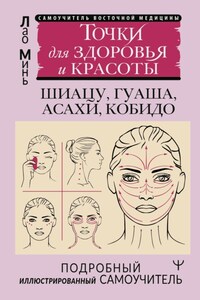There is a passage in the Bible that is often cited in the context of tattoos, Leviticus 19:28, which reads: «You shall not make any engravings or tattoos on yourselves: I am the Lord.» This verse from the Old Testament is usually interpreted as a prohibition on tattoos and other types of body modifications.
You should know that tattoos are a major sin.
It is up to you to decide whether to get them or not.
It is important to understand that the Bible was written in the context of the time and culture in which its first readers lived. At that time, tattoos could be associated with pagan rituals or idol worship, which was unacceptable for the people of Israel. In the modern world, many people get tattoos for a variety of reasons that are not always related to religious rituals.
However, some Christian denominations continue to adhere to this prohibition, interpreting it as part of the broader biblical principles of respect for the body as a temple of the Holy Spirit. At the same time, other Christians believe that the New Testament and the teachings of Jesus Christ allow more freedom in matters of personal choice and self-expression, including tattoos.
Thus, the question of tattoos in Christianity remains a matter of personal interpretation and belief.
Chapter 1: The history of tattooing: a journey from ancient to modern times
Tattooing is a form of body decoration that spans many cultures and eras. From primitive tribal symbols to complex modern works of art, tattoos have a rich and fascinating history.
Ancient roots
The earliest evidence of tattoos dates back to the Neolithic era, about 10,000 years ago. Archaeologists discovered the mummified skin of a Neolithic man known as Ötzi, with 61 tattoos on his body. These tattoos are believed to have had therapeutic purposes, as they corresponded to the location of his arthritic joints.
In other ancient cultures, tattoos were also used for ritual purposes. For example, in ancient Egypt, tattoos were common among women and often depicted goddesses and protective symbols. In Polynesia, tattoos were considered a sign of courage, status, and spiritual strength.
Middle ages and renaissance
During the Middle Ages, tattoos were mostly associated with criminals, outcasts, and travelers. In Christian Europe, tattooing was considered a pagan practice and was often banned. However, in some regions, such as Japan, tattoos continued to thrive and evolved into complex art forms.
During the Renaissance, European sailors began to encounter tattooed indigenous peoples on their travels. This led to a resurgence of interest in tattoos in Europe, and in the 17th century, tattoos became popular among sailors and other adventurers.
19th and 20th Centuries
During the 19th century, tattoos became more common in Western society. Travelers and anthropologists popularized tattoos by documenting them in their writings. At the same time, the invention of the electric tattoo machine in the late 19th century made tattoos more accessible and less painful.
In the 20th century, tattoos became more accepted in the mainstream due to the influence of popular culture and celebrities. In recent decades, tattoos have evolved into a widely accepted and respected form of self-expression and art.
Current trends
In the 21st century, tattoos continue to evolve and diversify. Modern tattoo artists use a variety of techniques and styles to create unique and impressive works of art. Tattoos have become a way to express individuality, memorialize, and even inspire social change.
The legacy of tattoos
The history of tattoos is a testament to human creativity and self-expression. From ancient rituals to modern works of art, tattoos remain a powerful and universal symbol of human history and culture. And as we continue to move forward, tattoos will undoubtedly continue to play an important role in our collective narrative.
Chapter 2 – Social stereotypes: how tattoos affect perceptions of identity
Tattoos have become an integral part of society, representing various meanings and symbolism. While some see them as a form of self-expression and art, others still associate them with negative social stereotypes. In this chapter, we explore how tattoos affect the way people perceive an individual.
Perception of an individual
Tattoos can have a significant impact on how people perceive each other. Research has shown that people with tattoos are often perceived as more risk-taking, rebellious, and independent. They may also be associated with a certain socioeconomic status or a certain subculture.
Stereotypes and prejudices
Unfortunately, tattoos can also reinforce existing stereotypes and prejudices. For example, tattoos are often associated with criminals or marginalized groups. These associations ations can lead to discrimination and stigmatization towards people with tattoos.
Impact on social interactions
Tattoos can also impact social interactions. Some people may feel uncomfortable or judge people with tattoos, leading to social isolation or limited opportunities. In the workplace, tattoos can impact perceptions of professionalism and authority.














